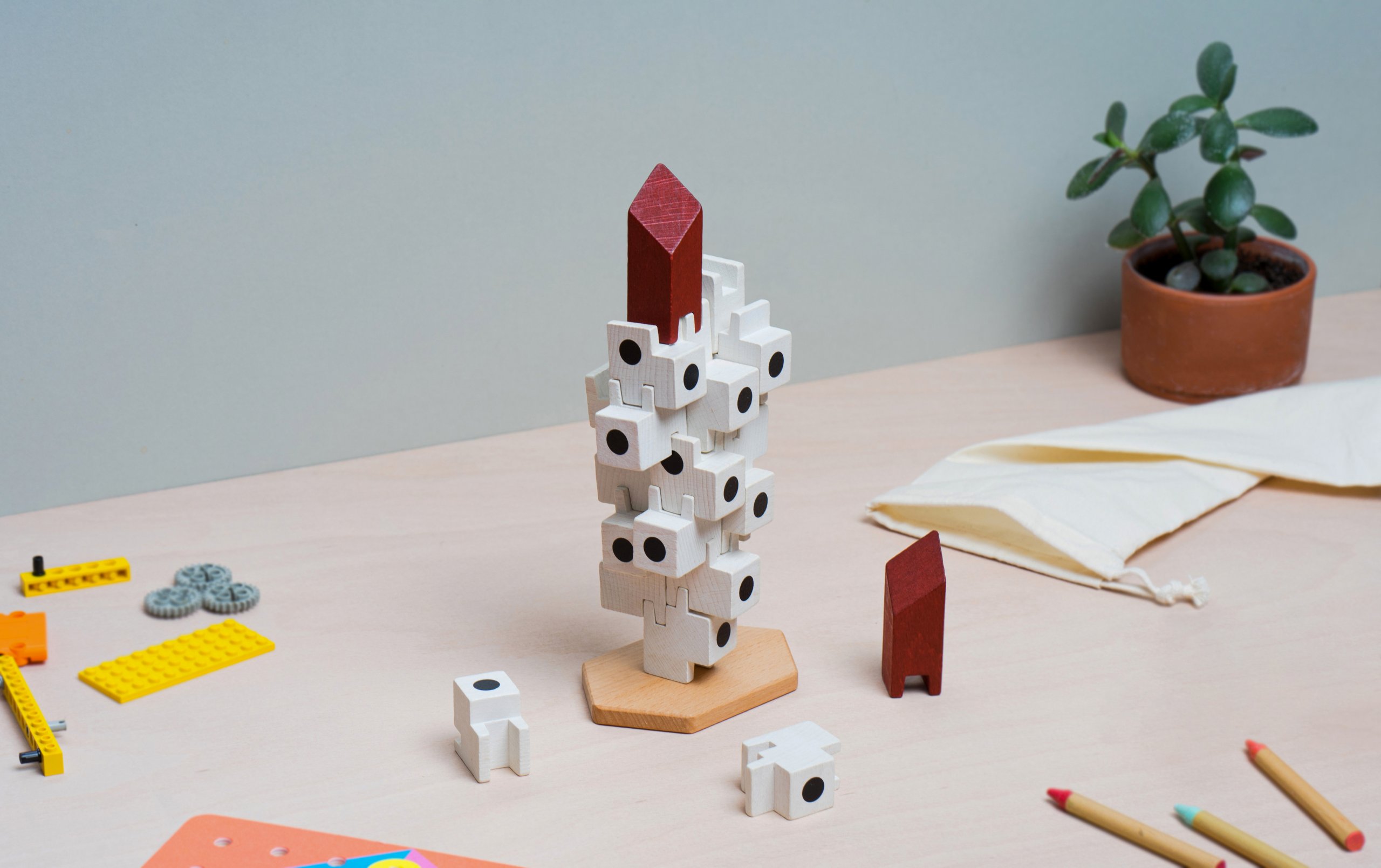Japanese Capsule Tower
Inspired by Tokyo's iconic Nakagin Capsule Tower Building, this wooden blocks set pays homage to the mixed-use structure designed by renowned Japanese architect Kisho Kurokawa. Completed in 1972, the building stood as a testament to innovative design until its disassembly in 2022.
Informed by the Japanese Buddhist concept of renewal, the Nakagin Capsule Tower was intended as a temporary form of architecture, adaptable and in constant evolution, simulating a living organism.
Following on that same principle, this wooden blocks set is an invitation to create and imagine different possibilities for a capsule tower design based on the idea of modularity.
There are hundreds of possibilities for combining the blocks, so you can create your own unique interpretation of this iconic building. The primary challenge is to maintain the balance while adding each block to prevent the tower from toppling over!
The resulting object serves at a memento of this Japanese avant-garde architectural masterpiece lost to the evolving needs of Tokyo.
The project is produced by A Tangible Future
Koa Koa product range had evolved in the last few years and their previous graphic identity didn't correspond with their current mission or ethos anymore.
The new brand communicates the idiosyncratic and DIY character of Koa Koa activities through the use of a stencil font for the headers and a more vibrant colour palette.
The maker, hands on approach is reflected both on the informal hand drawn lettering on the packaging and the more geometric stencil font.
The new logotype is composed of disjointed forms in reference to the brand product kits and will be also used as a branding pattern across different media.
Based on a dynamic grid, three colour contrasting content blocks define the main graphic structure which is applied to the Koa Koa website, packaging and printed booklets.
The identity will be gradually rolled out, and has been already applied to the packaging, and collateral elements. The now retail packaging comes in three languages (FR/EN/ES).
Koa Koa product range had evolved in the last few years and their previous graphic identity didn't correspond with their current mission or ethos anymore.
The new brand communicates the idiosyncratic and DIY character of Koa Koa activities through the use of a stencil font for the headers and a more vibrant colour palette.
The maker, hands on approach is reflected both on the informal hand drawn lettering on the packaging and the more geometric stencil font.
The new logotype is composed of disjointed forms in reference to the brand product kits and will be also used as a branding pattern across different media.
Based on a dynamic grid, three colour contrasting content blocks define the main graphic structure which is applied to the Koa Koa website, packaging and printed booklets.
The identity will be gradually rolled out, and has been already applied to the packaging, and collateral elements. The now retail packaging comes in three languages (FR/EN/ES).
Inspired by Tokyo's iconic Nakagin Capsule Tower Building, this wooden blocks set pays homage to the mixed-use structure designed by renowned Japanese architect Kisho Kurokawa. Completed in 1972, the building stood as a testament to innovative design until its disassembly in 2022.
Informed by the Japanese Buddhist concept of renewal, the Nakagin Capsule Tower was intended as a temporary form of architecture, adaptable and in constant evolution, simulating a living organism.
Following on that same principle, this wooden blocks set is an invitation to create and imagine different possibilities for a capsule tower design based on the idea of modularity.
There are hundreds of possibilities for combining the blocks, so you can create your own unique interpretation of this iconic building. The primary challenge is to maintain the balance while adding each block to prevent the tower from toppling over!
The resulting object serves at a memento of this Japanese avant-garde architectural masterpiece lost to the evolving needs of Tokyo.
Related URL: www.atangiblefuture.com
Materials: Beech wood, water-based pigments.
Date: 2024








